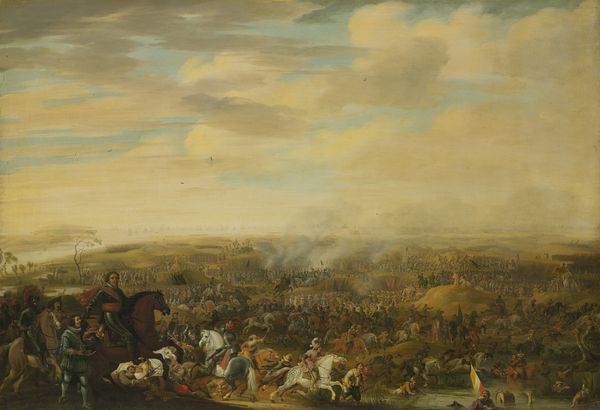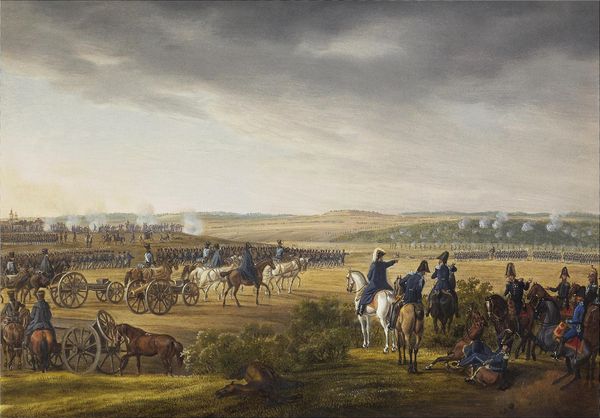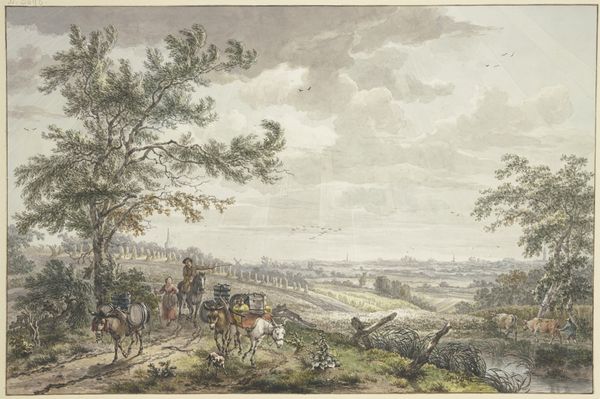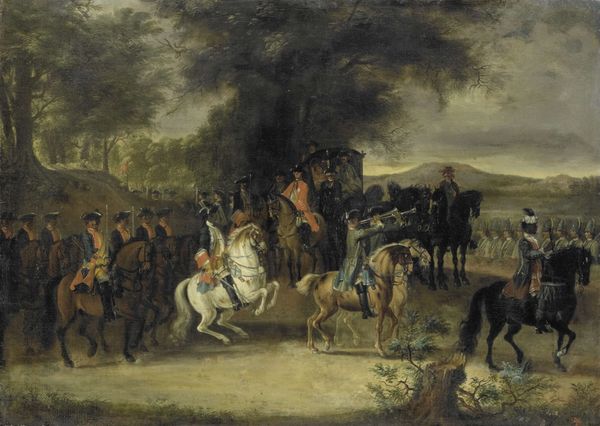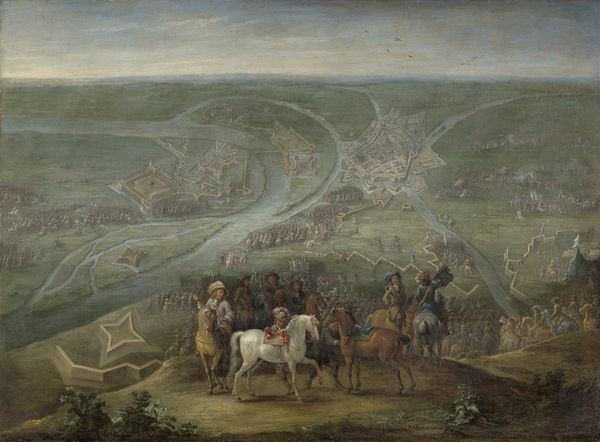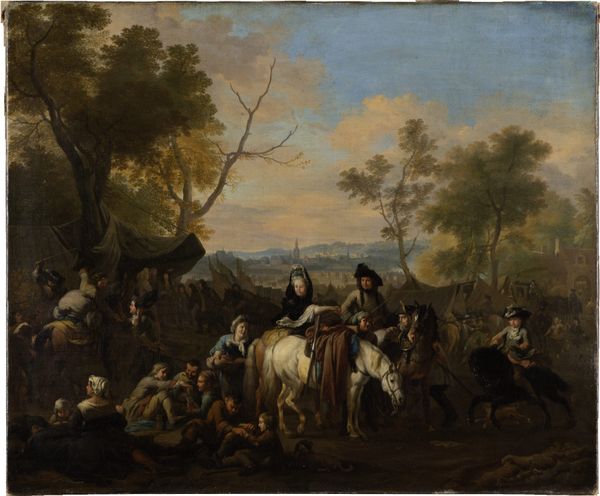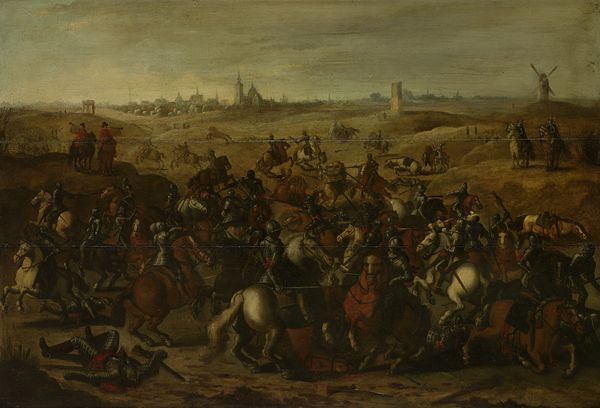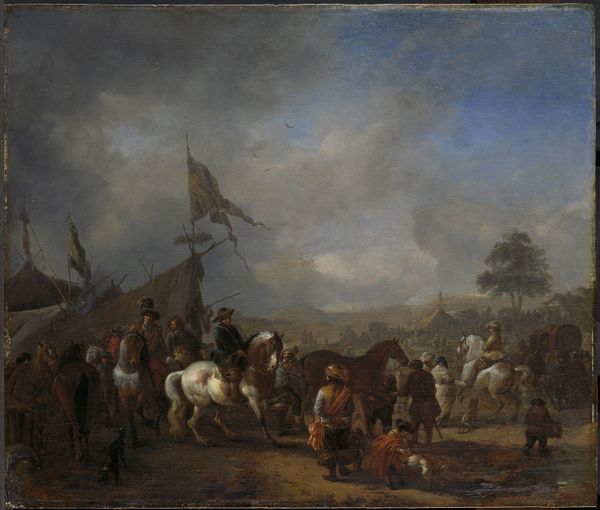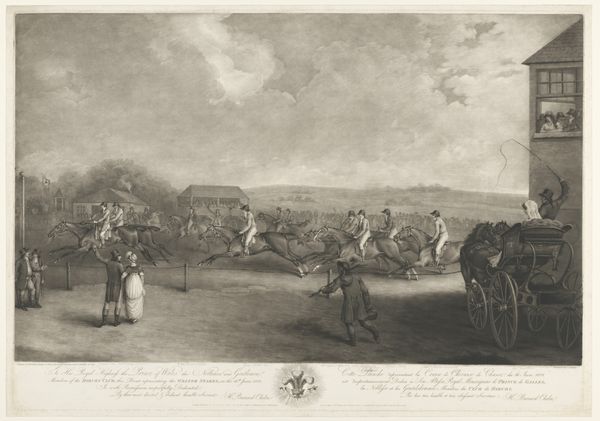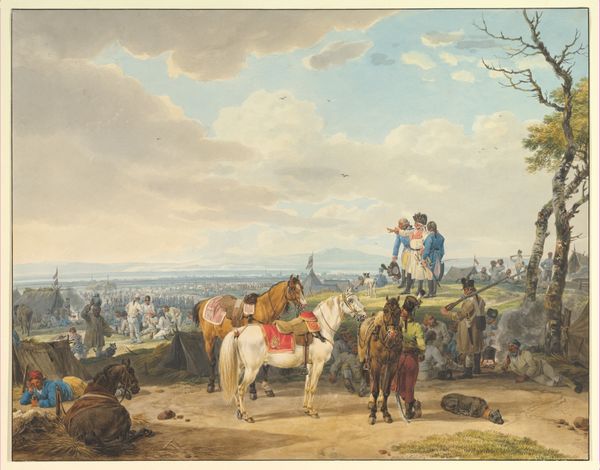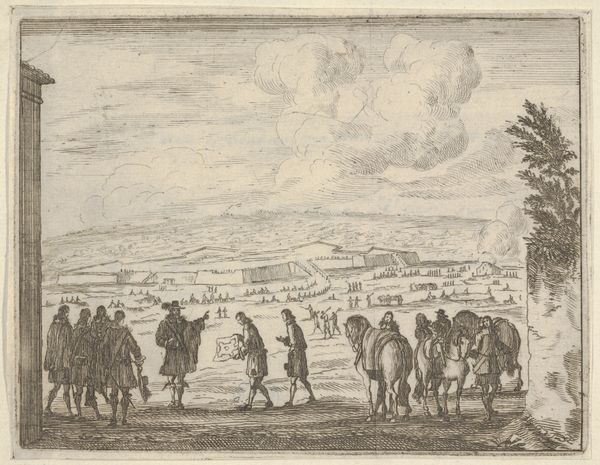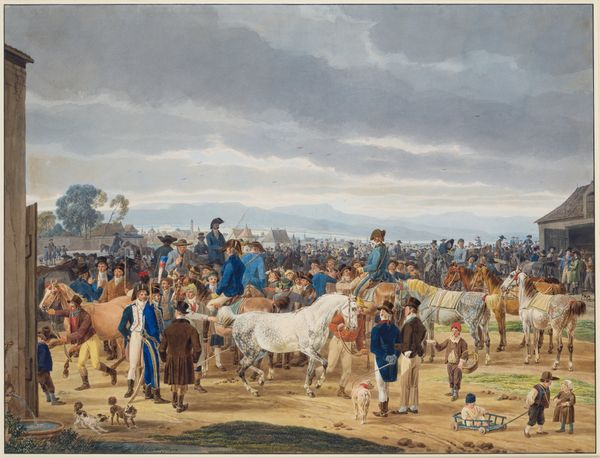
Dimensions: support: 1803 x 2388 mm frame: 2030 x 2618 x 80 mm
Copyright: CC-BY-NC-ND 4.0 DEED, Photo: Tate
Editor: Here we have James Seymour's "A Kill at Ashdown Park." I’m immediately struck by the dynamic arrangement of figures across the canvas. What compositional elements stand out to you? Curator: Note the layering of the landscape. Seymour uses a calculated recession into space, guiding the eye from the darker foreground to the lighter, almost ethereal background. Observe how the diagonal lines created by the hill slopes establish a visual rhythm. Editor: So, it’s not just about the hunting scene, but also how the artist uses lines and shapes to structure the whole picture? Curator: Precisely. The painting’s subject is not merely representational, but also formal. The carefully balanced arrangement of color, line, and form constitutes the essence of its artistic merit. Editor: That makes me see the painting in a completely new light. Thanks! Curator: Indeed. It is through such visual analysis that we truly comprehend the artwork's inherent qualities.
Comments
tate 7 months ago
⋮
http://www.tate.org.uk/art/artworks/seymour-a-kill-at-ashdown-park-t01115
Join the conversation
Join millions of artists and users on Artera today and experience the ultimate creative platform.
tate 7 months ago
⋮
The setting for this lively hunting scene was the Berkshire estate of Fulwar, 4th Baron Craven, who is shown in profile on a dark grey hunter to the left. His hunting-lodge, Ashdown House, appears in the distance. Seymour’s subject-matter was limited entirely to sporting scenes. He painted in a rather naive manner, using an unsophisticated form of perspective and with the figures and animals arranged in stiff poses. His interests lay rather in the decorative patterns in the composition. This is particularly apparent in the stylised grouping of hounds surrounding the huntsman holding up the dead fox. Gallery label, September 2004


